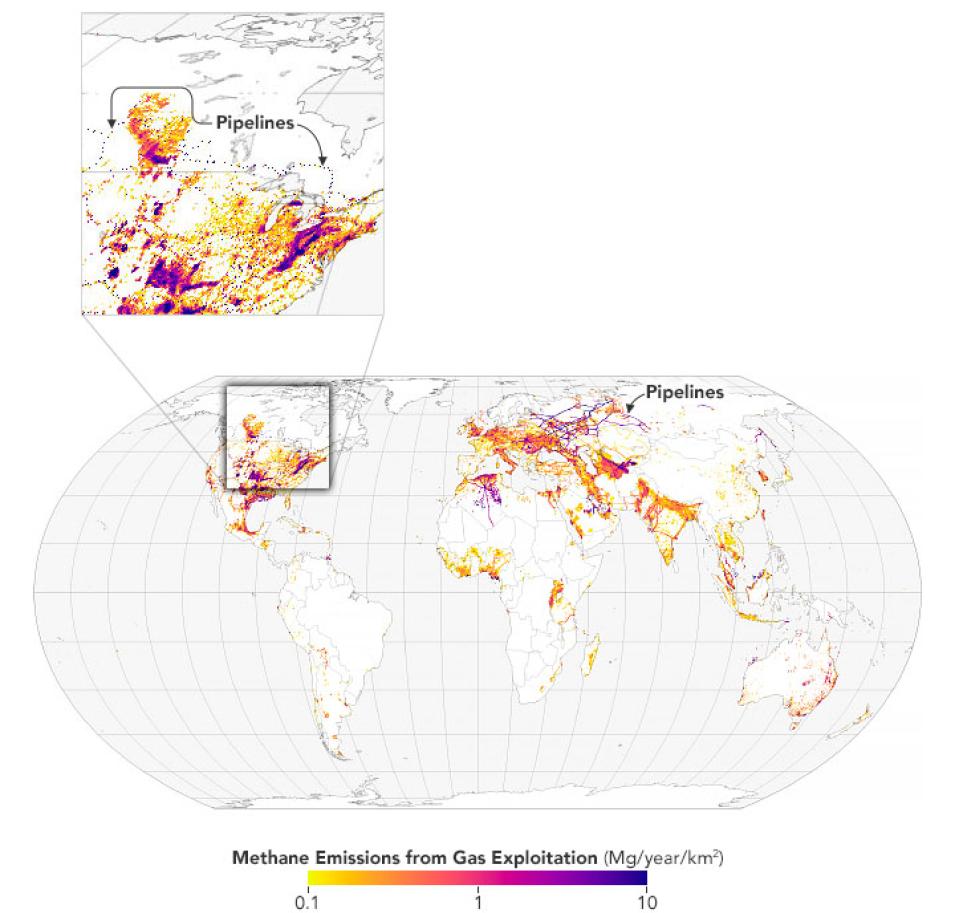The amount of methane in Earth's atmosphere has reached record levels in recent years. A major source of methane emissions is the extraction, storage, and transportation of oil, natural gas, and coal, which results in the release of about 97 million metric tons of methane gas each year, according to the United Nations (U.N.). In a recent research project, scientists mapped where those emissions are coming from—not just by nations but within them.
Methane is a potent greenhouse gas, trapping about 35 times more heat than carbon dioxide. The United States aims to reduce methane emissions 30% from 2020 levels by 2030.
Individual countries report their methane emissions by sector to the U.N. in accordance with the U.N. Framework Convention on Climate Change (UNFCCC). Most countries estimate their methane emissions using records of how much of each fossil fuel they produced each year, multiplied by an emissions factor provided by the Intergovernmental Panel on Climate Change (IPCC). And most countries only provide one number for emissions for each sector across the entire country.
Funded by NASA’s Carbon Monitoring System (CMS), scientists built a new series of maps detailing the geography of methane emissions from coal, oil, and gas exploitation. Using publicly available data reported in 2016, the research team plotted fuel exploitation emissions—or "fugitive emissions" as the UNFCCC calls them—that arise before the fuels are ever consumed. The maps delineate where these emissions occur based on the locations of coal mines, oil and gas wells, pipelines, refineries, and fuel storage and transportation infrastructure. The maps were recently published at NASA’s Goddard Earth Sciences Data and Information Services Center (GES DISC).
“It is widely known that the self-reported country estimates are not the highest quality,” said Tia Scarpelli, leader of the effort and now a postdoctoral research fellow at the University of Edinburgh. “Our maps provide researchers with a spatial representation of methane emissions so that they can be compared with observations of methane concentrations from satellites.” Such maps are critical for monitoring changes in greenhouse gas emissions via satellites, aircraft, or in situ measurements because the data tell scientists where to look and where to expect the most emissions.
The maps show the largest sources of oil-related emissions are found in Russia; the U.S. leads natural gas emissions; and coal emissions are highest in China. For oil and gas, the emissions are distributed across wells, flares, pipelines, refineries, and storage facilities. For coal, the emissions are mapped to where it is mined.

